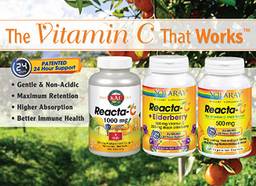|
Search Term: " Halit "
Using Parley for Halitosis
Date:
January 07, 2011 12:40 PM
Using Parley for Bad Breath Parsley is often used to treat Halitosis because it appears to absorb the foul odors that emanate from the mouth due to poor digestion, tooth decal and gum disease, and also from the anaerobic bacteria living deep in the crevices of the tongue and the inside of the cheek. The mechanism by which parsley does this is not yet known, although many believe it to be due its chlorophyll content. Chlorophyll is known to mask or neutralize bad mouth odors, and many chew parsley to achieve this. Chlorophyll is used in toothpastes, mouthwashes and chewing gum, but not nearly as much today as it was when it first became popular for this use in the 1950s. Available in capsule form that often also contains garlic, parsley supplements are very popular. It is not sure whether it is present in garlic supplement to enhance its health-giving properties or to mask the typical garlic odor, although it does appear to work in freshening the breath while also offering a number of other health benefits including the highly antioxidant properties of parsleys' particularly high Vitamin C content.
(https://vitanetonline.com:443/forums/Index.cfm?CFApp=1&Message_ID=2216) OralBiotic for Ear, Nose, and Throat Health
Date:
May 28, 2010 01:29 PM
OralBiotic™ For Ear, Nose & Throat HealthNEW IN JUNE 2010
The food we eat, the environmental particles we inadvertently inhale, and a wide range of additional factors can all contribute to the residual presence of undesirable oral bacteria. For the most part, these particles are harmless and can be washed away by saliva or enzyme activity. Some bacterium, however, can lead to acute Halitosis (bad breath) when left behind, as well as a potentially-increased affinity towards various infections resulting from bacterial imbalance. For individuals striving to support on a head-to-toe good health, it is important to take this into consideration when developing or augmenting one’s nutritional program. NOW® Foods new OralBiotic™ is a completely innovative natural supplement developed specifically to help promote healthy oral bacteria, and therefore, a desirable state of overall health and wellness. OralBiotic™ contains the naturally-occurring probiotic organism Streptococcus salivarius BLIS K12®, which has been shown in clinical studies to support both oral and throat health. OralBiotic™ BLIS K12® is not an antibiotic, but it can successfully colonize the oral cavity at the expense of other bacteria, thereby encouraging oral health.1 For greater support, we’ve included Fructooligosaccharides (FOS), a prebiotic that provides nutritional support for the growth and preservation of S. salivarius. OralBiotic™ can also promote fresh breath when used in conjunction with proper oral hygiene, such as NOW® XyliWhite™ products. To help your customers get the most out of this exciting new formula, we recommend taking it in conjunction with one of NOW® Foods’ various high-potency natural Probiotic supplements.* BLIS K12® Advantages: • The strength of the scientific and clinical data behind BLIS K12® • A unique probiotic clinically-demonstrated to benefit the mouth and throat* • Strong IP position (13 patents granted worldwide and 15 patent applications pending) • Stability/shelf life (Two years shelf life at ambient temperatures) • Demonstrated efficacy of various delivery formats • An extensive safety record and comprehensive safety data † Used with permission from the BLIS K12® website
(https://vitanetonline.com:443/forums/Index.cfm?CFApp=1&Message_ID=2163)
Date:
February 23, 2009 11:54 AM
Mononucleosis is an infectious viral disease that is most often caused by the Epstein-Barr virus. More rarely, it can be caused by cytomegalovirus. Both of these viruses are members of the herpes family. Once the virus enters the body, it multiplies in lymphocytes. Mono then affects the respiratory system, the lymphatic tissues, and glands in the neck, groin, armpits, bronchial tubes, spleen, and liver. Symptoms of mono include depression, extreme fatigue, fever, generalized aching, headache, jaundice, and loss of appetite, sore throat, pain on the upper left side of the abdomen, puffy eyelids, swollen glands, and sometimes, a bumpy, red rash. Additionally, the spleen may become enlarged and liver function may be affected. Meningitis, encepHalitis, and rupturing of the spleen are very rare complications that may develop as a result of mono. The virus’s associated with mono are extremely contagious, often being transmitted from person to person by close contact such as kissing, which explains why mono is often referred to as the “kissing disease.” The disease can also be spread by sharing food or utensils, as well as through sexual contact or through respiratory droplets. The incubation period for mono is about ten days in children and thirty to fifty days in adults. A lot of mononucleosis cases occur in the military and in colleges, as living conditions are crowded and sleeping patterns are inadequate. High school students also have a high incidence of this disease. Mono is most common among children and adolescents, as about 90 percent of people over age thirty-five have mono antibodies in their blood, which means that they had the disease at some point in their lives, although many do not even know they had it. The symptoms of mononucleosis are very similar to those of influenza, which often results in mono often being mistaken for it. However, with mono, the symptoms tend to be more persistent, with acute symptoms usually lasting from two to four weeks, and fatigue persisting for three to eight weeks after the other symptoms disappear. The disease can even linger for a year or more in some individuals. It can also produce recurring, but successively milder, attacks. If the immune system has been compromised by an organ transplant, HIV/AIDS, or other viruses, the mono symptoms can be extremely serious and chronic. Mononucleosis is diagnosed through a blood test called a spot test. This test reveals the presence of specific viral antibodies and also confirms the presence of mono. Additionally, a liver function test can assist in the diagnosis. The following nutrients are considered to be extremely important in dealing with mononucleosis: acidophilus, proteolytic enzymes, vitamin A with mixed carotenoids, and vitamin C with bioflavonoids. Other nutrients that have proven to be both important and helpful include: DMG, a free-form amino acid complex, garlic, vitamin B complex, zinc lozenges, maitake extract, reishi extract, shiitake extract, a multivitamin and mineral complex, and raw thymus glandular. Astragalus and Echinacea are also beneficial in boosting the immune system, while cat’s claw has immune-enhancing properties that act against viral infections. Dandelion and milk thistle are beneficial in protecting the liver. Goldenseal helps to fight infection, while olive leaf extract helps to inhibit the growth of viruses that cause mono. Pau d’arco balances the bacteria in the colon and spirulina contains phytonutrients that are helpful in boosting the immune system. Whether you want to combat mono symptoms naturally or use prescription drugs, always consult your family physician before taking matters into your own hands. A correct diagnosis is important to how one might want to combat sickness in general. Natural vitamins like the ones listed above are available at your internet health food store. *Statements contained herein have not been evaluated by the Food and Drug Administration. Vitamins and herbs are not intended to diagnose, treat and cure or prevent disease. Always consult with your professional health care provider before changing any medication or adding Vitamins to medications.
(https://vitanetonline.com:443/forums/Index.cfm?CFApp=1&Message_ID=1970) Natural Toothpastes
Date:
February 18, 2009 03:15 PM
Most of the time, Halitosis is caused by poor dental hygiene. However, there may be other factors involved such as gum disease, tooth decay, heavy metal buildup, infection of the respiratory tract, improper diet, constipation, smoking, fever, diabetes, foreign bacteria in the mouth, indigestion, inadequate protein digestion, liver or kidney malfunction, postnasal drip, stress, and too much unfriendly bacteria in the colon. Additionally, Halitosis can be caused by a buildup of toxins in the gastrointestinal tract, salivary gland disorder, chronic bronchitis, sinusitis, or diabetes. It is also true that dieting, alcohol abuse, or fasting can also cause bad breath. “Morning breath” is the product of dehydration and the reduction in the amount of saliva. This saliva is necessary for washing away bacteria in the mouth. Dieters and people who are fasting may often experience bad breath. This is because the lack of food causes the body to break down stored fat and protein for fuel. The metabolic wastes that are a result of this process have an unpleasant odor as they are exhaled from the lungs. The following nutrients are beneficial for dealing with and preventing bad breath. One tablespoon of chlorophyll can be taken in juice twice daily, as green drinks are one of the best ways to combat bad breath. 2,000 to 6,000 mg of vitamin C with bioflavonoids should be taken daily. Vitamin C is important in healing mouth and gum disease and preventing bleeding gums. This nutrient also rids the body of excess mucus and toxins that cause bad breath. Acidophilus should be taken as directed on the label. It is needed to replenish the friendly bacteria in the colon. Insufficient friendly bacteria and an overabundance of harmful bacteria can often cause bad breath. Garlic acts as a natural antibiotic by destroying foreign bacteria in both the mouth and the colon. It is recommended that you take 2 capsules of the odorless form 4 times daily, with meals and at bedtime. 30 mg of zinc should be taken three times daily as it has an antibacterial effect and neutralizes sulfur compounds. These sulfur compounds are a common cause of mouth odor. Bee propolis should be taken as directed on the label. It is helpful in healing the gums, aiding control of infection in the body, and also has an antibacterial effect. 15,000 IU of vitamin A should be taken daily; it is needed for control of infection and also in healing of the mouth. Additionally, 100 mg of vitamin B complex is needed for proper digestion. The following herbs are also beneficial for dealing with Halitosis. Alfalfa supplies chlorophyll, which cleanses the bloodstream and colon, where bad breath often begins. Gum disease, which is a major factor of bad breath, can be treated with goldenseal extract. This extract can heal the infected parts. Myrrh, peppermint, rosemary, and sage should be used to brush your teeth and rinse your mouth. Chewing a sprig of parsley after meals is an excellent treatment for bad breath. This nutrient is rich in chlorophyll, which happens to be a popular ingredient in breath mints. Other herbs that can be beneficial include anise, cloves, and fennel. Whether you want to take it into your own hands to heal your gums from disease, a gum disease can be a sign of a more significant health problem that should be looked at by our health care provider. In either case, vitamins and herbs can be found at your local or internet health food store.
*Statements contained herein have not been evaluated by the Food and Drug Administration. Natural Toothpaste is not intended to diagnose, treat and cure or prevent disease. Always consult with your professional health care provider before changing any medication or adding Vitamins to medications.
(https://vitanetonline.com:443/forums/Index.cfm?CFApp=1&Message_ID=1967) Triphala Fact Sheet
Date:
December 08, 2005 04:09 PM
Triphala Fact SheetNeil E. Levin, CCN, DANLA 6/30/05LIKELY USES: Antioxidant Colon Cleansing, Detoxifying, Digestive, Liver and bile health KEY INGREDIENTS: Triphala 500 mg, in a combination of fruit powders and extracts MAIN PRODUCT FEATURES: Triphala is a combination of three fruits (Harada, Amla, and Behada) that has been used in Ayurvedic herbalism for thousands of years. Triphala's historical use as a digestive cleanser and tonifier has been backed up with numerous modern scientific studies demonstrating the positive effects of its component herbs on the gastrointestinal tract. In addition, Triphala has been shown to be a potent antioxidant, protecting cells against the damaging effects of free radicals. May help to dispel worms. Mild-acting internal cleansing; supports liver and gastrointestinal function ADDITIONAL PRODUCT USE INFORMATION & QUALITY ISSUES: NOW offers the first - and only - Triphala supplement to combine the fruit powders (400 mg) with the extracts (100 mg) of the fruits (doses given per tablet, there are three tablets per serving). Authorities like Dr. Andrew Weil consider Triphala to be a superior bowel tonic, rather than a laxative, with its benefits increasing over time. Laxatives typically are habit-forming and do not enhance normal body elimination of wastes; this is not the case with (moderate doses of) Triphala. This formula is suitable for vegetarians and is offered in tablet form. SERVING SIZE & HOW TO TAKE IT: As a dietary supplement, every three tablets provide 1,200 mg. (1.2 gram) Triphala powder and 300 mg. (0.30 gram) Triphala extract. Both the powder and the extract provide the three fruits in equal ratios, by weight. Take one to three servings per day, between meals. COMPLEMENTARY PRODUCTS: Fiber sources (psyllium, pectin, etc.), Detox Support, Plant Enzymes, Virgin Coconut Oil, Dr. Verghese Liver Formula, Bentonite Powder, Probiotics (GR-8 Dophilus, 4x6 Acidophilus, etc.), Electrolytes (minerals) CAUTIONS: none PRODUCT SPECIFIC: Contraindicated during pregnancy and lactation; avoid during menstruation; not appropriate for the very young or very old or the convalescent. GENERAL: Pregnant and lactating women and people using prescription drugs should consult their physician before taking any dietary supplement. When taking any new supplement, use common sense and cautiously increase to the full dose over time to avoid any potential problems. Packages may contain moisture or oxygen controlling packets or canisters that are not intended for consumption. In order to maintain maximum freshness, please do not remove these from your bottle (until the bottle is empty). Please recycle your container. Disclaimer: These statements have not been evaluated by the FDA. This product is not intended to diagnose, treat, cure or prevent any disease. REFERENCES: Abraham S, Kumar MS, Sehgal PK, Nitish S, Jayakumar ND. Evaluation of the inhibitory effect of triphala on PMN-type matrix metalloproteinase (MMP-9). J Periodontol. 2005 Apr;76(4):497-502. PMID: 15857087 Al-Rehaily AJ, Al-Howiriny TA, Al-sohaiani MO, Rafatullah S. (2002) Gastroprotective effects of 'Amla" Emblica officinalis on in vivo test models in rats. Phytomedicine 9(6):515-522. Arora S, Kaur K, Kaur S. Indian medicinal plants as a reservoir of protective phytochemicals. Teratog Carcinog Mutagen. 2003;Suppl 1:295-300. PMID: 12616620 Jagetia GC, Baliga MS, Malagi KJ, Sethukumar Kamath M. The evaluation of the radioprotective effect of Triphala (an ayurvedic rejuvenating drug) in the mice exposed to gamma-radiation. Phytomedicine. 2002 Mar;9(2):99-108. PMID: 11995956 Jagetia GC, Malagi KJ, Baliga MS, Venkatesh P, Veruva RR (2003) Triphala, an Ayurvedic Rasayana Drug, Protects Mice Against Radiation-Induced LetHality by Free-Radical Scavenging. J Alt Complement Med 10(6):971-978. Jagetia GC, Rao Sk,, Baliga MS, Babu K (2004) The evaluation of nitric oxide scavenging activity of certain herbal formulations in vitro: a preliminary study. Phytother Res 18(7):561-565.
Kaur S, Michael H, Arora S, Harkonen PL, Kumar S. The in vitro cytotoxic and apoptotic activity of Triphala--an Indian herbal drug. J Ethnopharmacol. 2005 Feb 10;97(1):15-20. Epub 2004 Dec 25. PMID: 15652269 Kaur S, Arora S, Kaur K, Kumar S. The in vitro antimutagenic activity of Triphala--an Indian herbal drug. Food Chem Toxicol. 2002 Apr;40(4):527-34. PMID: 11893411 Sabu MC, Kuttan R (2002) Anti-diabetic activity of medicinal plants and its relationship with their antioxidant property. J Ethnopharmacol 81:155-160. Sairam K, Rao CV, Dora M, Babu K, Kumar V, Agrawal VK, Goel RK (2002) Antiulcerogenic effect of methanolic extract of Emblica Officinals: an experimental study. J Ethnopharmacol 82:1-9. Sandhya T, Lathika KM, Pandey BN, Mishra KP. Potential of traditional ayurvedic formulation, Triphala, as a novel anticancer drug. Cancer Lett. 2005 May 14; [Epub ahead of print] PMID: 15899544 Tamhane MD, Thorat SP, Rege NN, Dahanukar SA (1997) Effect of oral administration of Terminalia chebula on gastric emptying: an Experimental study. J Postgrad Med 43(1):12-13. Vani T, Rajani M, Sarkar S, and Shishoo CJ. Antioxidant Properties of the Ayurvedic Formulation Triphala and its Constituents. International Journal of Pharmacognosy Vol 35, No. 5, 1997:313-3
(https://vitanetonline.com:443/forums/Index.cfm?CFApp=1&Message_ID=995) INFECTIONS AND GARLIC
Date:
June 25, 2005 10:12 AM
INFECTIONS AND GARLICBacterial Infections With the advent of modern antibiotic drugs, garlic lost its status as an effective infection fighter. Unfortunately, Garlic’s past track record was diminished by the arrival of new and potent antibiotics like penicillin. Ironically, several years ago, garlic was reported to be more valuable than penicillin when treating throat infections.26 One reason for this may be that the allicin component of garlic is effective against the streptococci bacteria. Traditional Oriental medicine utilized garlic in a variety of forms to treat all kinds of infections: garlic juice for typhoid, and meningitis, garlic vapors for whooping cough, garlic suppositories for yeast infections and garlic soup for pneumonia.27 According to studies in the Journal of the National Medical Association, Garlic has proved its ability to act as a potent antibiotic against various gram-negative, gram-positive and acid fast bacteria. In view of the fact that garlic has even been shown to be effective against some antibiotic-resistent organisms, it should be utilized more in standard medical treatments. Several medical practitioners have discovered that like throat infections, ear infections also respond nicely to garlic. The great advantage of using garlic over antibiotics is that Garlic will not kill friendly intestinal bacteria or make one more susceptible to future infections. Antibiotics will. In cases where antibiotics are deemed necessary, they should at the very least be supplemented with garlic. Current research supports the fact that garlic does indeed inhibit bacterial growth.28 Several strains of Mycobacterium are suppressed by the presence of garlic. For anyone who fights chronic bladder infections, garlic may prove invaluable. It has been shown to inhibit the growth of several organisms associated with urinary tract infections.29 Evidence suggests that garlic can effectively treat bacterial ear infections, sore throats, and infected wounds. Several reports have shown that aged garlic extract is particularly effective for the kind of ear infections that children are prone to develop. (Note: Ingesting raw garlic is not a practical way to utilize its allicin compounds as an effective antibiotic. Too much raw garlic would be required to be effective.) Viral Infections It is common knowledge that as of now, viruses do not respond to antibiotics and are extremely resistent to other forms of treatment. A virus usually has to run its course, as those of us who suffer periodically from colds and flu know all too well. Because viruses are so hardy, it is important to know that garlic possesses antiviral as well as antibacterial properties. Dr. Andrew Weil M.D. states that the best home remedy he has found for the treatment of colds is to eat several cloves of raw garlic at the first indication that a cold is developing.30 Several laboratory tests have shown that garlic is an effectual treatment for both the influenza B virus and herpes simplex virus.31 Two independent researchers in Japan and Romania have found that garlic is able to protect living organisms form the influenza virus.32 Chinese scientists have studies the effect of garlic on viral encepHalitis for almost 30 years. Clarissa McCord of Cloverdale, British Columbia used garlic extract to treat a stubborn virus that attacks horses. She relates: “A bottle of liquid garlic administered on two successive days to each animal does the job of curing. One of my race hors es developed the virus symptoms and was to be scratched from the racing program scheduled for the following day. I gave one bottle of liquid garlic to the animal and he improved sufficiently to enter the race. He hit the board first, second and third.”33 In relation to human beings, it would seem that Garlic is especially effective in cases of influenza as both a treatment to shorten the duration of the disease and as a preventative. Again, garlic’s ability to stimulate the immune system seems intrinsically linked to its anti-viral action. Whether the infection is bacterial or viral, garlic mobilizes immune function, thereby potentiating the body’s ability to defend itself against infectious organisms. Fungal Infections Garlic in certain forms is considered a potent antibiotic and can be particularly effective against certain fungal infections. Like viruses, fungal infections are particularly difficult to treat . Traditional medical treatments for fungal infections are usually toxic and can be ineffectual over the long term. To the contrary, garlic has proven itself as an effective anti-fungal agent against candida, aspergillus and cryptococci. A report from a Chinese medical journal delineates the use of intravenous garlic to treat a potentially fatal and rare fungal infection of the brain called cryptococcal meningitis. In the report, the Chinese compared the effectiveness of the garlic with standard medical treatment which involved a very toxic antibiotic called Amphotericin-B. The study revealed that intravenous garlic was more effective than the drug and was not toxic regardless of its dosage.34 One study using liquid garlic extract found that candida colonies were substantially reduced in mice that had been treated with the garlic. This same study also revealed that garlic stimulated phagocytic activity. This implies that infections such as candida may be controlled because garlic stimulates the body’s own defenses. Applied externally, garlic oil can be used to treat ringworm, skin parasites and warts. Lesions that were caused by skin fungi in rabbits and guinea pigs were treated with external applications of garlic extract and began to heal after seven days.35 Allicin is primarily a fungistatic substance which can slow or completely stop the proliferation of the microorganisms. As an external treatment, garlic has also been found to effectively treat acne and thrush.
(https://vitanetonline.com:443/forums/Index.cfm?CFApp=1&Message_ID=435) | ||||||||||||||||||||||||||||||||||||

 Many people, even some of the most nutritionally well-versed health enthusiasts, are unaware that the body’s immune system activity actually begins in the mouth. In addition to Amylase, saliva contains an important enzyme, called lysozyme, which functions as a first line of defense against potentially harmful constituents. This simple aspect of human health speaks volumes about what’s happening inside our mouths. The short version is that the mouth offers a near perfect environment for the growth and fortitude of various bacteria; some good, and some clearly not so good. No one is immune to this, including those who are meticulous in their oral care practices.
Many people, even some of the most nutritionally well-versed health enthusiasts, are unaware that the body’s immune system activity actually begins in the mouth. In addition to Amylase, saliva contains an important enzyme, called lysozyme, which functions as a first line of defense against potentially harmful constituents. This simple aspect of human health speaks volumes about what’s happening inside our mouths. The short version is that the mouth offers a near perfect environment for the growth and fortitude of various bacteria; some good, and some clearly not so good. No one is immune to this, including those who are meticulous in their oral care practices. 



